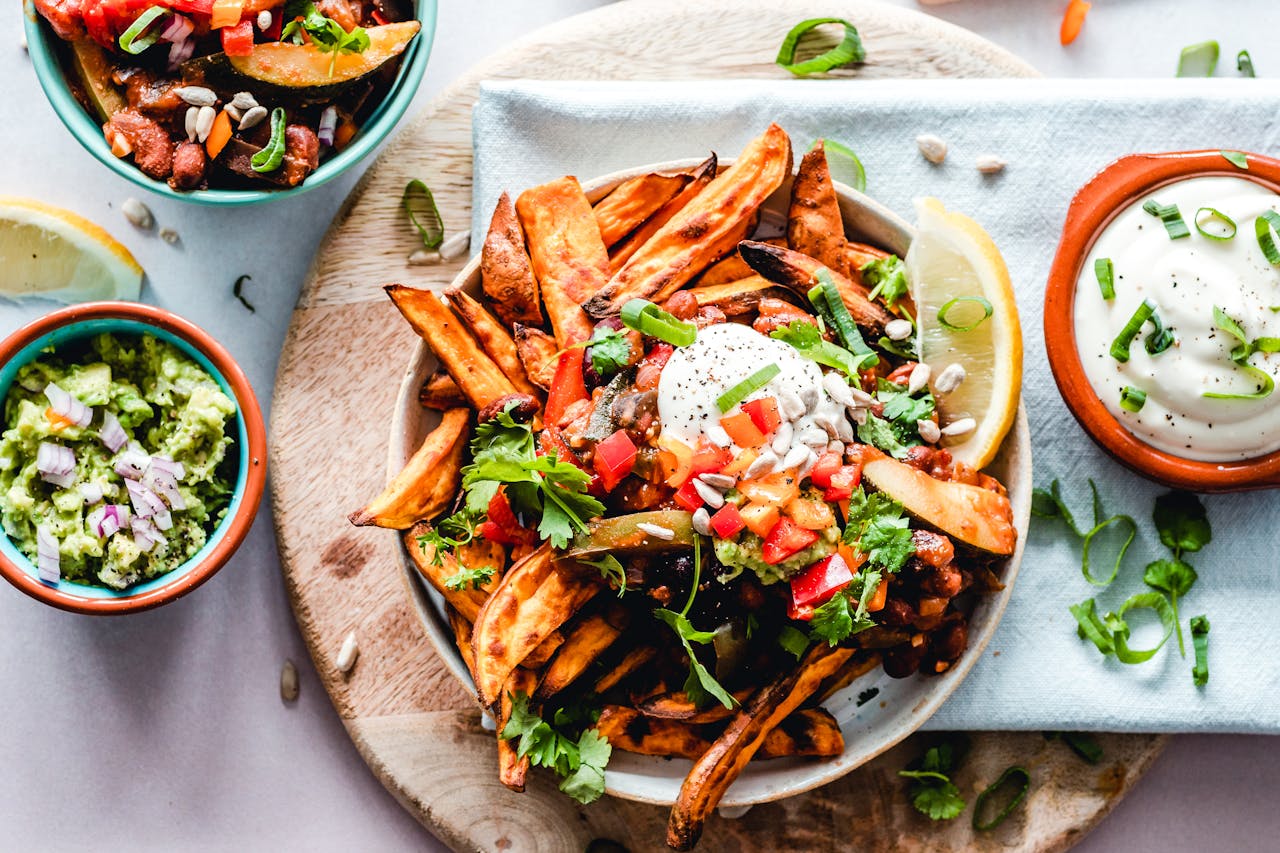14 Street Foods So Good They’re Worth The Plane Ticket
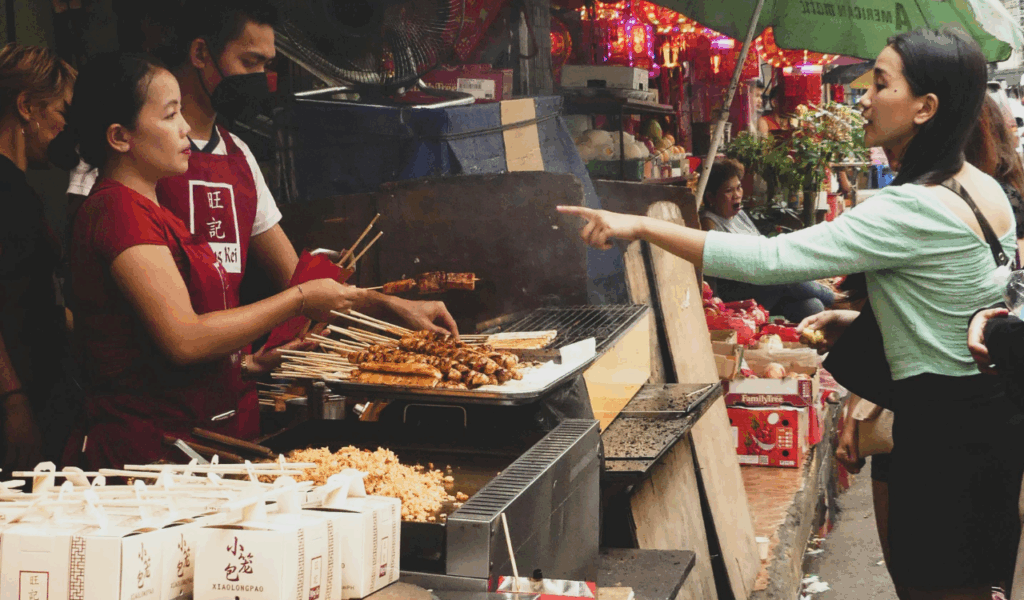
Street food has a certain allure because it’s quick, tasty, and deeply ingrained in the community. Street food brings soul, in contrast to fine dining, which frequently prioritizes presentation and formality. These are the delicacies you discover while exploring bustling alleyways or secret marketplaces, prepared by chefs who have spent decades honing their craft. These recipes, which are frequently handed down through the generations, capture the essence of a country’s culinary customs. The simplicity of street food—bright spices, fresh ingredients, and an unadulterated passion for feeding the community—is what makes it so alluring. Then there’s the energy: the sound of sizzling pans and grills, as well as the commotion of locals congregating around a small cart to get their daily fix. These street foods, which range from Mexican tacos to Japanese Takoyaki, are not only delicious but also transformative. They’re so good, in fact, that many tourists insist that they’re worth purchasing a plane ticket for. Are you prepared for the journey? One bite at a time, let’s explore the world.
1. Tacos al Pastor – Mexico
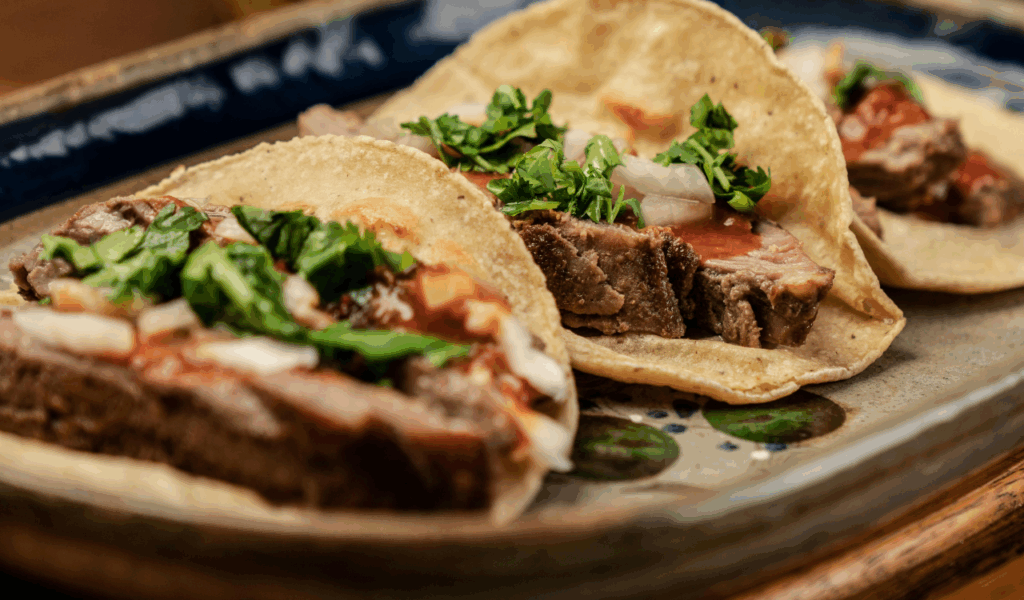
An excellent illustration of successful cultural fusion is tacos al pastor. Shawarma was first introduced to Mexico by Lebanese immigrants, and it has since developed into a distinctively Mexican dish. Before being stacked on a vertical spit and slow-roasted until they are perfectly tender and crispy at the edges, thin slices of pork are marinated in a colorful mixture of chilies, garlic, vinegar, and pineapple. Warm, soft corn tortillas are piled with the caramelized pork that has been shaved off in ribbons. Then, to counterbalance the savory heat, it is garnished with chopped onions, fresh cilantro, and juicy pineapple chunks. These tacos can be found all over Mexico, from roadside stands in Oaxaca to busy street corners in Mexico City. The atmosphere, which includes hearing the cleaver’s chop, watching the meat spin and sizzle under a flame, and biting into a taco that feels like a party in your mouth, is what makes them worth the trip, not just the flavor. pure happiness.
2. Bánh Mì – Vietnam
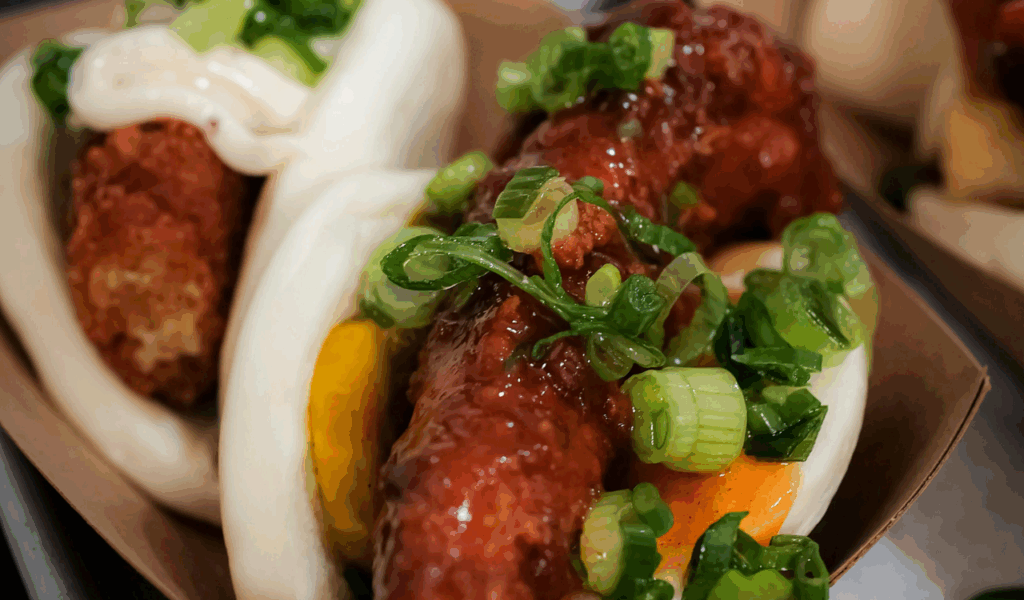
More than just a sandwich, Vietnam’s bánh mì is a delightful culinary dialogue between the East and the West. Vietnam is known for its fillings, but this crispy, airy baguette was first introduced during French colonial times. Typically, there will be a layer of flavorful pork pâté, slices of cold cuts or grilled pork, and pickled veggies like cucumbers, carrots, and daikon. Every bite will be a taste explosion when you add fresh cilantro, hot chili, and a small amount of soy or fish sauce. They are swiftly prepared by vendors, who frequently wrap them in paper before delivering them to clients on scooters. It has the ideal ratio of tangy, savory, and herbal flavors and is light but satisfying, crunchy yet tender. The bánh mì is a popular dish that is inexpensive but filling, found on street corners in Hanoi and at roadside stands in Da Nang. Every other sandwich seems inferior after you’ve had one freshly made on the streets of Vietnam.
3. Chaat – India

Chaat is an exciting category of Indian street snacks that offers a mouthwatering taste explosion with each bite, not just one dish. You’ll see why the word “chaat” literally means “to lick” after you give it a try. All of the variations of sev puri, bhel puri, papdi chaat, and aloo tikki chaat include a blend of soft boiled potatoes, crunchy fried dough, spiced chickpeas, creamy yogurt, fresh herbs, and tart tamarind or mint chutneys. Chaat is unique in that it appeals to all of your senses—sweet, sour, salty, spicy, and umami all come together in the most delicious way. Every vendor has a unique “secret blend” of spices, and because of regional variations, it’s worthwhile to try several varieties in places like Delhi, Mumbai, and Kolkata. Chaat’s rustic charm is enhanced by the fact that it is frequently served in paper bowls or on leaf plates. Chaat is vibrant, noisy, and full of life, and the experience of eating it on Indian streets is just as important as the taste.
4. Arepas – Colombia & Venezuela
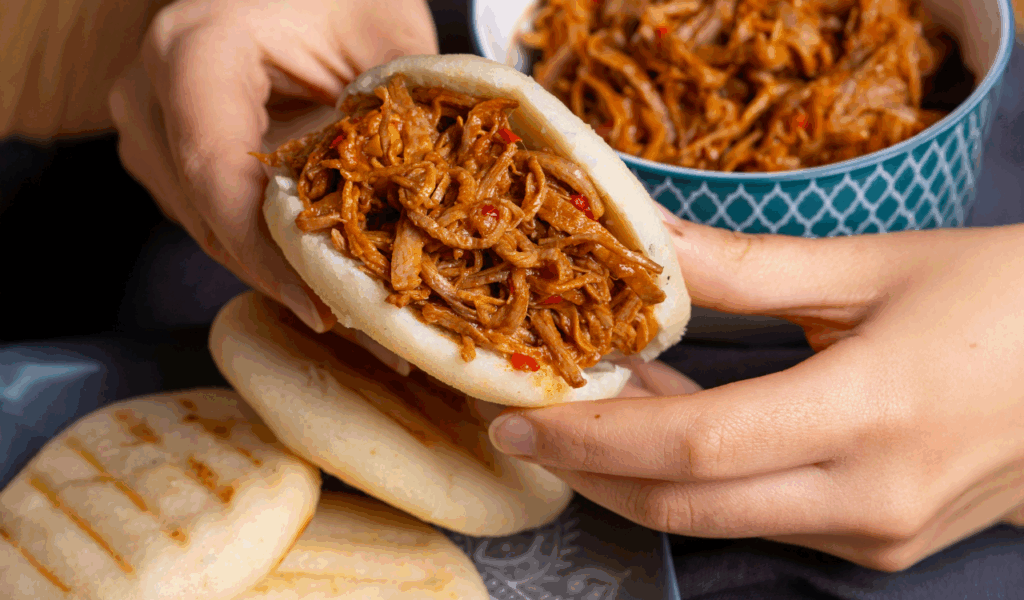
A warm, golden embrace in the form of food is what arepas are. Popular in Venezuela and Colombia, these round cornmeal cakes are fried or griddle-cooked until the outside becomes crisp and the inside stays soft and fluffy. The arepa’s versatility is what makes it so beautiful. In Venezuela, they take on more of the role of a meal, with names like “Reina Pepiada” (shredded chicken and avocado) or “Pabellón” (beef, plantains, beans, and cheese). In Colombia, they are typically kept simple, filled with cheese, butter, or eggs. In both nations, street vendors serve them hot and fresh, occasionally stuffing them full and slicing them open like pita bread. Arepas are hearty, satisfying, and comforting whether they are consumed for breakfast, lunch, or dinner. They make the ideal backdrop for strong fillings because of their mild, slightly sweet flavor. You’ll quickly realize why arepas are more than just food—they’re a cultural icon—after you bite into one on a city street in Bogotá or Caracas.
5. Gimbap – South Korea
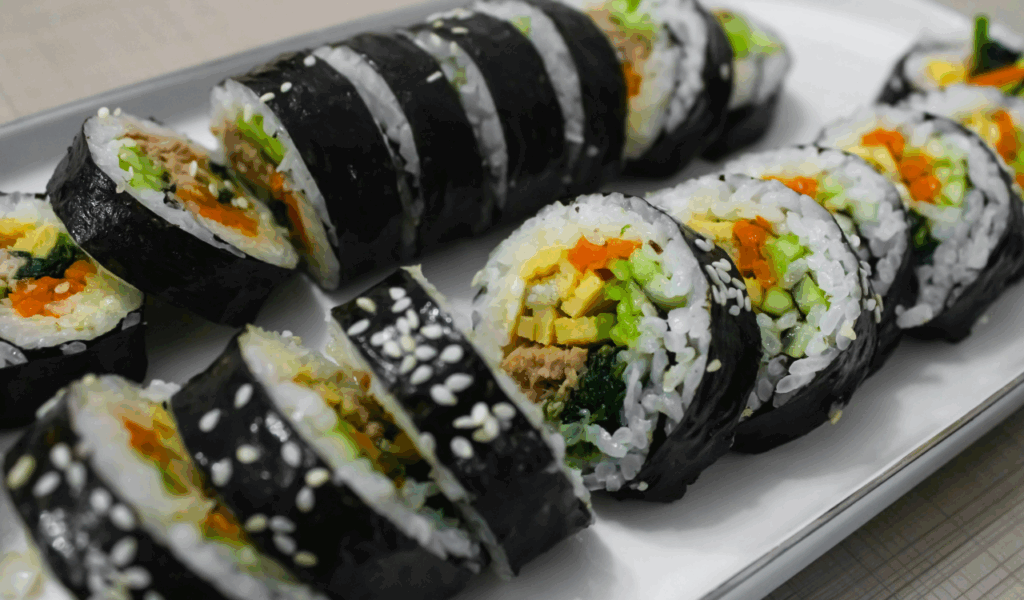
The ultimate on-the-go meal is gimbap, sometimes referred to as Korea’s sushi roll (although it’s very different). steamed rice, a sheet of seaweed (gim), and fillings like pickled radish, spinach, carrots, eggs, and meats like ham or bulgogi. It is then rolled up and cut into bite-sized discs. The rice has a toasty, nutty flavor because it is usually seasoned with salt and sesame oil instead of vinegar. Gimbap’s widespread appeal and portability—it’s filling, healthy, and simple to pack—are the main factors contributing to its popularity. Gimbap is popular for picnics and train rides and can be found in street vendors, convenience stores, and outdoor markets all over Seoul and Busan. Gimbap is safe and accessible for everyone because it uses cooked or pickled ingredients instead of raw fish sushi. Every mouthful is harmonious, vibrant, and pleasantly chewy. Gimbap is a delicious, clean, and varied snack that keeps you going whether you’re exploring a night market or stopping for lunch in between sightseeing destinations.
6. Jerk Chicken – Jamaica
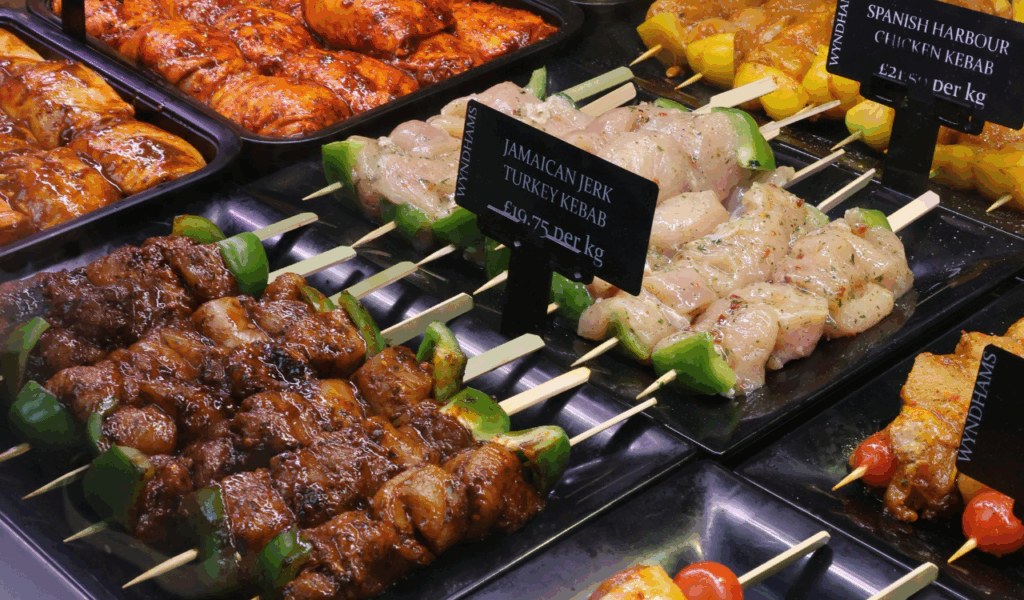
Jamaican jerk chicken has a rich, smoky flavor that few street foods can match. This classic dish starts with a strong marinade, which is typically a blend of scallions, garlic, cinnamon, allspice, thyme, and Scotch bonnet peppers. After marinating, the chicken is slow-grilled over pimento wood, which gives it a deep, distinct smokiness. The outcome? Tender, juicy meat that is bursting with earthy spice and heat, with crispy, blackened skin. In Jamaica, street vendors frequently cook their chicken on roadside oil drum grills, and the aroma alone attracts customers. Rice and peas, fried plantains, or festival—a sweet, fried dough—are common accompaniments. More than just a food, jerk chicken is a symbol of Jamaica’s tenacity and rich culture. It is a full-bodied, full-flavor experience to eat it on the island while the ocean breeze blows through the air and reggae music plays in the background. You won’t be content with anything less after tasting authentic jerk chicken.
7. Döner Kebab – Turkey
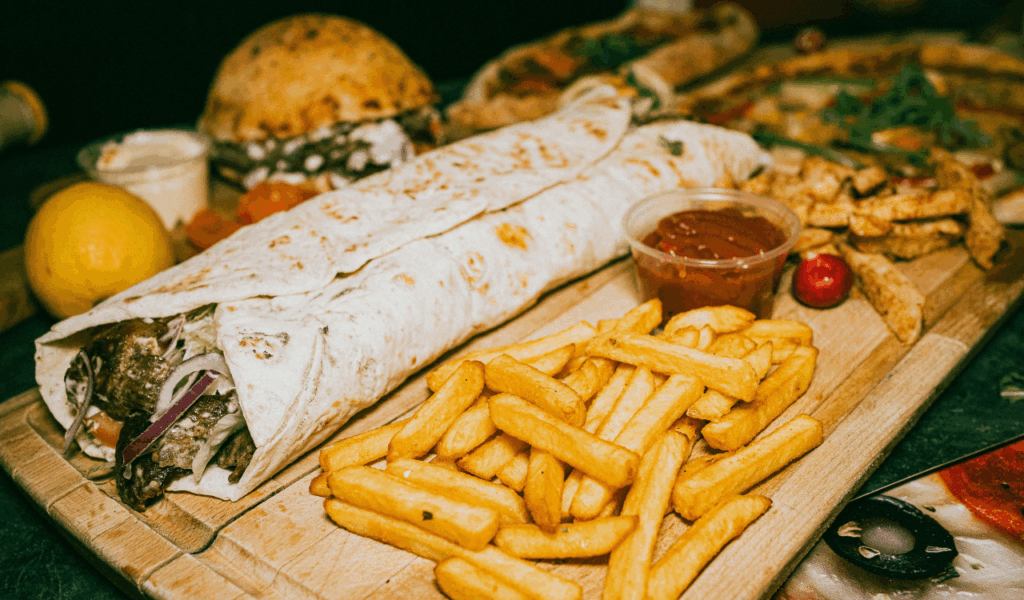
Turkey’s döner kebab is a great option if you’re searching for a filling, flavorful street food that can be eaten as a full meal. Slices of lamb, beef, or chicken that have been marinated are stacked on a vertical spit and slowly rotated next to a heat source until the meat is tender inside and crispy on the outside. Slices are sliced by the vendor and served in flatbreads (such as pita or lavash) or in wraps with tomatoes, lettuce, onions, and sauces (such as yoghurt or chilli). Döner stands are a mainstay of the street food scene in Turkey, particularly in Istanbul. The fresh vegetables and tart sauces perfectly counterbalance the strong flavor, which is savory, spicy, and slightly smoky. The sandwich is incredibly satisfying, substantial, and hot. Even though döner is now widely consumed, there is something particularly unique about consuming one from a street vendor in Turkey, where the flavor, quality, and freshness are unparalleled. One bite at a time, it’s a complete cultural immersion.
8. Takoyaki – Japan

A fun, flavorful Japanese snack that appeals to the senses of sight and taste is takoyaki. A wheat-based batter is used to make these round, golden balls, which are then cooked in a specialized griddle with round molds. Pickled ginger, green onions, tempura scraps, and a tiny piece of octopus (tako) are all inside each ball. The vendor skillfully flips them as they cook, creating a crispy outside and a gooey, hot interior. After cooking, they are garnished with bonito (dried fish) flakes that appear to dance from the heat, savory Takoyaki sauce, creamy mayonnaise, and dried seaweed flakes. Although Takoyaki originated in Osaka, it is now widely consumed throughout Japan, particularly at street vendors, festivals, and night markets. They are extremely addictive due to the combination of textures—crispy on the outside, molten on the inside—and the deep umami flavor. A classic Japanese experience that you will want again and again is eating Takoyaki right off the griddle while strolling through the busy streets of Dotonbori or Tokyo.
9. Choripán – Argentina

A grilled chorizo sausage wrapped in crusty bread, typically split and occasionally “butterflied” to expose more crust, is the incredibly satisfying yet delectably simple street food known as choripán in Argentina. The sauce, which is often drizzled over the sausage to add fresh tang, garlic punch, and herbaceous kick, or salsa criolla (a mixture of parsley, garlic, vinegar, oil, and herbs) is what makes it so much better. It is served at roadside stands, football games, and social events, or “asados,” where the aroma of the grilling sausage and the atmosphere of community elevate it above the status of a simple sandwich. A taste of Argentina’s passion for meat, smoky flavors, and basic ingredients that are powerful in both taste and culture can be found in choripán.
10. Supplì – Italy (Rome)
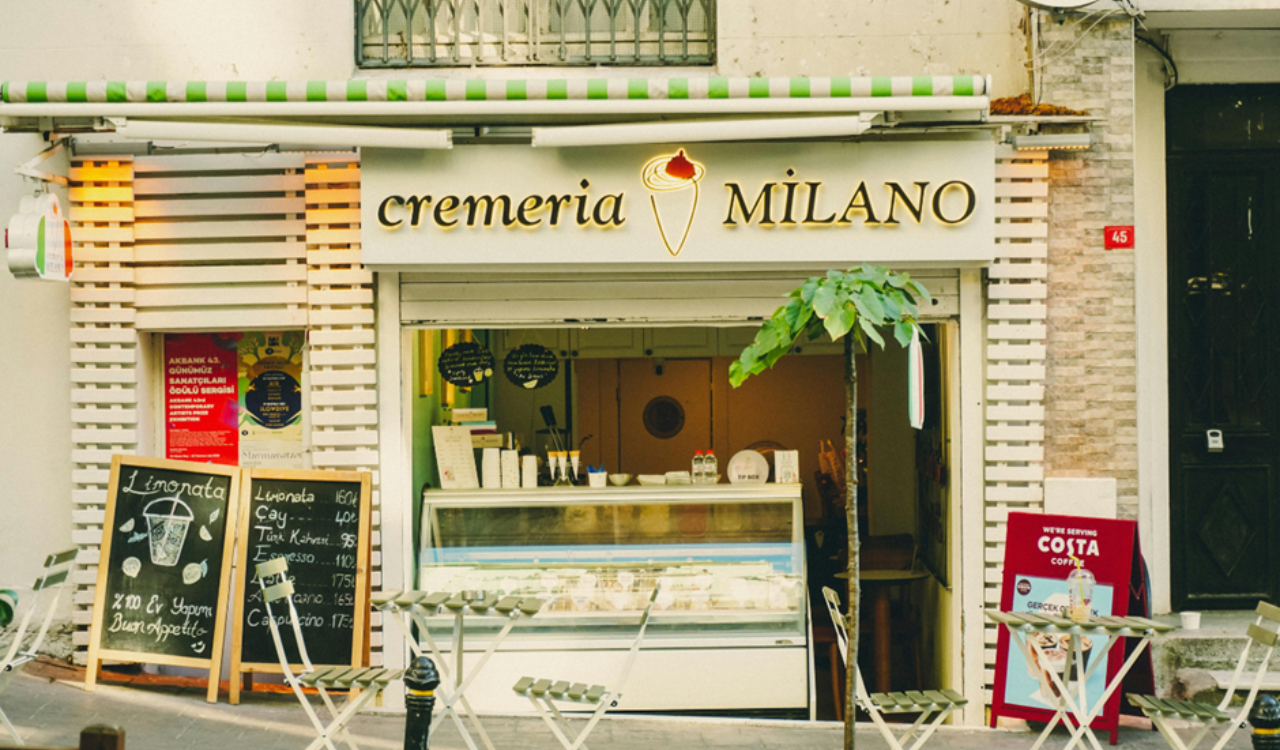
Supplì, which are deep-fried rice croquettes with a golden crust and a molten, stretchy mozzarella center, are iconic Roman street food. In the traditional version, rice is cooked with tomato ragù, seasoned, shaped (sometimes elongated), breadcrumb-coated, and deep-fried. Because the melted cheese stretches like a telephone wire when you break them in half, they are frequently referred to as supplì al telefono, or “supplì on the phone.” These are snacks or appetizer-style treats that are sold by vendors or small shops in Rome. They are ideal for lingering in tiny alleys or while you wait for your next meal. These tiny morsels are comforting, cheesy, savory, and crunchy all at once.
11. Jianbing – China

In many Chinese cities, jianbing—a savory pancake or crepe—is a common street food for breakfast. A thin batter, usually made with wheat, mung beans, or other flours, is spread over a hot griddle to form the base. Fillings such as scallions, coriander, hoisin or chili sauces, and occasionally crispy wonton sheets or crunchy fried crackers (youtiao) are added after the eggs are cracked on top and spread. It is portable, hot, and flavorful—layered layers of soft, crisp, spicy, sweet, and salty. It’s definitely a taste adventure because it’s prepared right in front of you, offering layers of flavor and texture, and is consumed quickly before cooling. You should try it in Beijing or Shanghai.
12. Tteokbokki – South Korea
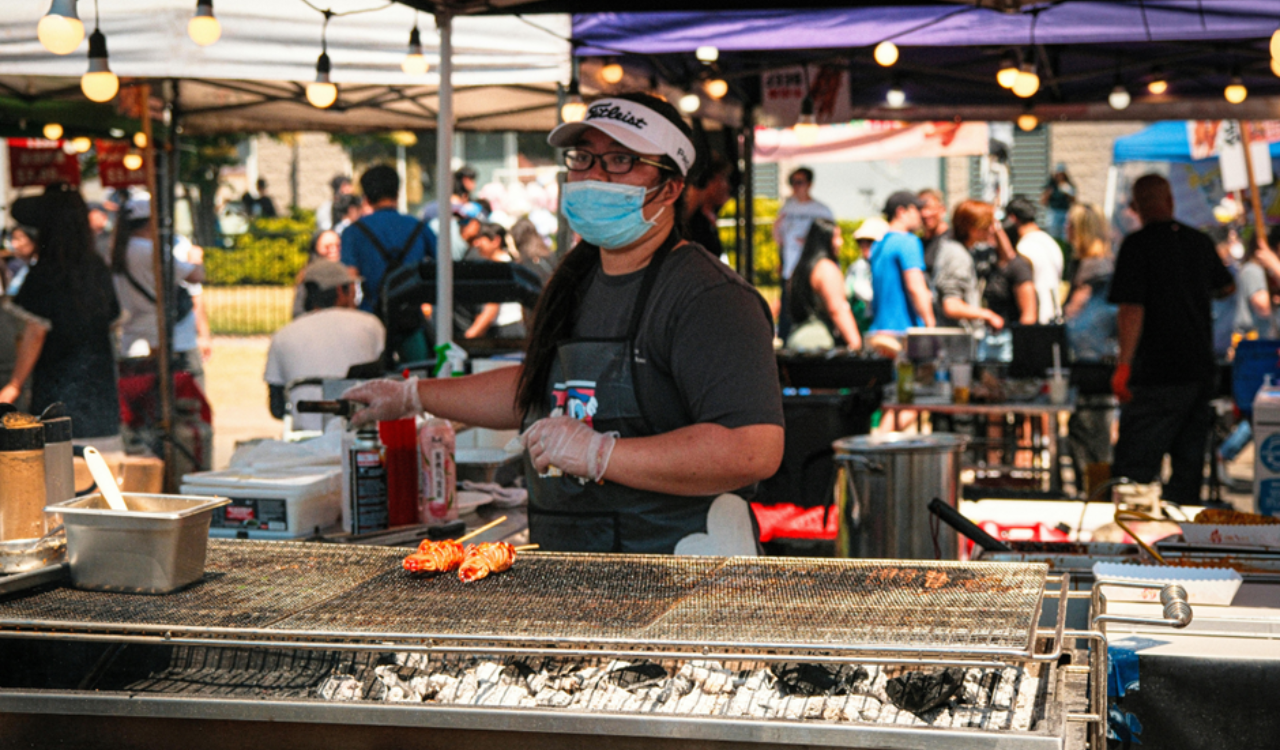
Typically made with gochujang (Korean chili paste), sugar, garlic, and occasionally a small amount of soy sauce, tteokbokki are chewy cylindrical rice cakes that are stir-cooked in a spicy-sweet red sauce. Common accompaniments include fish cakes, boiled eggs, sesame seeds, and scallions. The warm, comforting, and satisfying texture of this street food—the rice cakes are soft and chewy, the sauce is thick and flavorful, and the heat builds—makes it particularly popular in cooler weather. Tteokbokki, which can be found in food stalls, markets, and street carts, is affordable, enticing, and the ideal illustration of how comfort and strong flavor can coexist.
13. Ceviche – Peru / Latin America

Ceviche is a raw fish dish that is cured in citrus juice, usually lemon or lime, and occasionally a little ginger or garlic. It also contains fresh cilantro, onions, and chili peppers. Freshness is crucial because the citrus’s acid “cooks” the fish, so it must be extremely fresh to be safe. To counterbalance the vibrant, tangy, spicy flavors, it’s frequently served with sides like plantain chips, corn, or boiled sweet potatoes. Ceviche is a light but incredibly flavorful midday meal sold by street vendors in Lima and along the coast. It has crisp vegetables, bright acid, and the unadulterated taste of the sea.
14. Tamales – Central America / Mexico
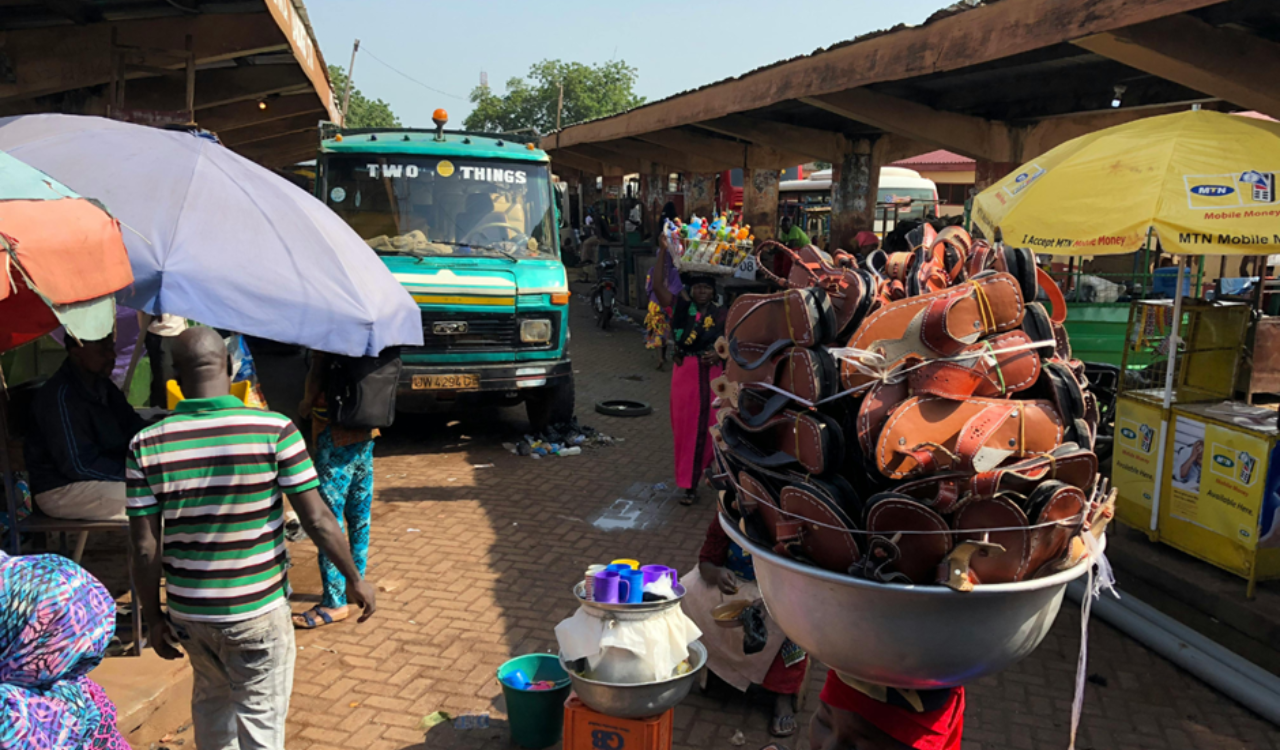
Traditional tamales are made with masa (corn dough) filled with cheese, meats, vegetables, chilies, or sweet ingredients, then wrapped in banana leaves or corn husks and steam-cooked. People purchase them for breakfast, lunch, or as a snack; street vendors frequently prepare large quantities in advance and steam them throughout the day. All of the fillings come together to create a multi-layered flavor experience, the wrapper adds a subtle flavor, and the masa provides a soft, slightly sweet base. Tamales are perfect for eating “on the go,” whether you’re taking a bus or strolling through city markets, because they’re portable, warm, and satisfying.




